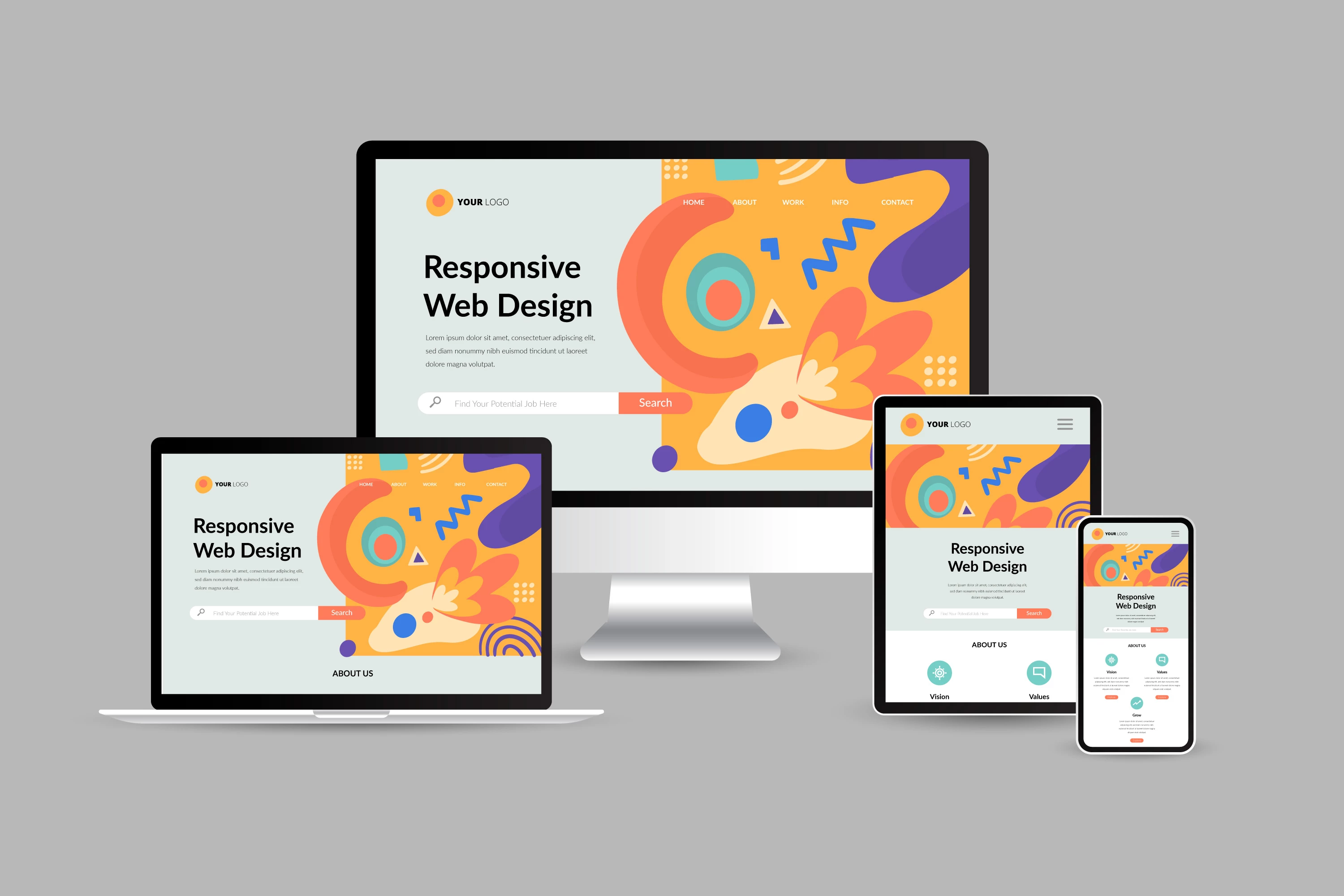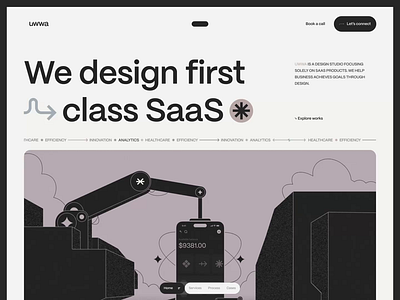Modern Internet Site Layout That Records Interest and Converts
In a significantly electronic landscape, contemporary website layout has emerged as a crucial aspect in capturing customer interest and driving conversions. By strategically using visual power structure, receptive layouts, and involving interactive elements, developers can produce experiences that not just draw in site visitors however also promote significant communications. Additionally, efficient call-to-action techniques play an important duty in assisting individuals towards desired results. As we discover these vital parts, it ends up being clear that recognizing their interplay can substantially influence a site's efficiency and customer complete satisfaction. What are the vital elements that really make a distinction?
Significance of Visual Power Structure
Aesthetic hierarchy is a crucial aspect in web site design, as it overviews individuals' interest and improves their overall experience. By purposefully organizing web content, designers can direct individuals to the most essential information initially, consequently enhancing involvement and improving usability.
Including a rational circulation in content setup is crucial; for circumstances, positioning the most essential info at the top of a page cultivates prompt recognition. Moreover, constant use typography, such as varying font dimensions and styles, aids develop a clear content structure. This organization not only aids in navigating yet also builds depend on, as individuals really feel a lot more comfy when they can easily find what they are trying to find.
Inevitably, a well-executed visual power structure not just enhances aesthetic allure but likewise substantially influences customer behavior. By prioritizing crucial elements and ensuring a seamless experience, developers can efficiently convert site visitors into customers, strengthening the value of this fundamental style concept in modern website development.
Responsive Design for All Devices
Producing a smooth experience across different devices is vital in today's electronic landscape, where individuals gain access to web sites from desktops, smart devices, and tablet computers alike. Responsive layout is a critical strategy that makes sure sites adapt fluidly to various screen resolutions, positionings, and sizes. By employing adaptable grids, pictures, and CSS media questions, designers can develop designs that maintain aesthetic integrity and capability, despite the tool being utilized.
The relevance of responsive layout prolongs past appearances; it directly influences individual engagement and conversion prices. A website that works well on all tools motivates longer visits and minimizes bounce prices, as individuals are more probable to connect with content that is simple to browse. Search engines, particularly Google, prioritize mobile-friendly websites in their positions, making receptive design a crucial part of search engine optimization (SEARCH ENGINE OPTIMIZATION)
Incorporating receptive design not just improves customer experience but likewise enhances the growth procedure. By creating a single site that works across gadgets, organizations can conserve time and sources contrasted to developing separate mobile and desktop versions. Ultimately, responsive design is a fundamental technique for contemporary web site layout, making certain access and satisfaction for all users, despite their device.
Engaging Interactive Elements
While a receptive style prepares for a practical web site, integrating appealing interactive aspects is vital for catching individual attention and fostering much deeper links. Website Design. Interactive aspects, such as animations, quizzes, and clickable infographics, create an extra vibrant individual experience, encouraging visitors to invest even more time on the site
Incorporating interactive attributes can likewise direct individuals via complex details, making it less complicated to digest content. Interactive sliders can illustrate item variants, while embedded videos can give demonstrations or endorsements that reverberate more than fixed images or message. Gamification strategies, like rewards for finishing tasks or involving with material, can boost individual inspiration and retention.
Effective use of interactive aspects not just enhances the user experience however can likewise lead to greater conversion prices. It is necessary to stabilize interactivity with efficiency; extremely intricate attributes might prevent website rate, adversely impacting individual contentment.
Structured Navigating Practices
Efficient navigation is a foundation of any successful website, as it directly affects customer experience and material availability. Structured navigation practices ensure that users can conveniently situate info, improving their interaction with the website. A well-structured navigation menu need to be straightforward and instinctive, usually featuring a minimal number of primary groups to avoid frustrating visitors.
To accomplish structured navigation, developers ought to focus on an ordered framework that logically organizes web content. Applying breadcrumb tracks can give customers with context concerning their existing location within the website, enabling smooth backtracking. Furthermore, making use of drop-down menus can successfully conserve space while still giving accessibility to subcategories.
Responsive design is crucial, as navigation must be functional throughout all gadgets (Website Design). Mobile customers, in specific, take advantage of touch-friendly menus and collapsible sections that maintain usability without compromising appearances

Reliable Call-to-Action Techniques
A well-crafted call-to-action (CTA) is important for guiding individuals toward desired results on an internet site, as it encourages them to engage with content or make a purchase. To maximize their effectiveness, CTAs need to be clear, engaging, and strategically positioned throughout the website.
First, utilize action-oriented language that communicates urgency or value, such as "Get going," "Sign up with Currently," or "Claim Your Discount rate." This language not only motivates customers however additionally sets clear expectations concerning the following steps.
Second, think about layout components; CTAs must attract attention aesthetically via contrasting shades, ample whitespace, and noticeable positioning. A button that is very easy to see and click rises the probability of individual interaction.
In addition, personalizing CTAs based on individual behavior or demographics can substantially enhance involvement. Tailored messages resonate extra with users, driving greater conversion rates.

Final Thought
In conclusion, modern website style emphasizes the assimilation of aesthetic pecking order, responsive formats, involving interactive components, structured navigation, and effective call-to-action right here strategies. These elements collectively boost customer experience, ensuring that visitors stay engaged and inspired to discover web content further. By focusing on these layout principles, services can substantially boost customer retention and conversion rates, eventually bring about better success in my explanation the digital landscape. The constant development of website design highlights its essential role in reliable on the internet interaction and advertising.
In an increasingly electronic landscape, modern web site style has actually emerged as a pivotal element in catching user attention and driving conversions.Visual pecking order is a vital component in internet site design, as it guides individuals' attention and boosts their general experience.The significance of responsive style prolongs beyond visual appeals; it straight affects user interaction and conversion rates.Incorporating receptive design not just boosts customer experience however also enhances the development procedure. Eventually, responsive layout is an essential approach for contemporary website style, ensuring accessibility and contentment for all users, no matter of their tool.